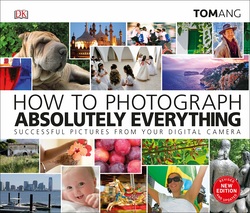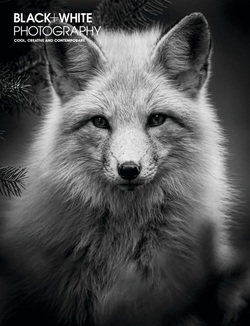پالت بصری؛ تعریف سبک عکاسی شما

سال انتشار: 2015 | 216 صفحه | حجم فایل: 61 مگابایت | زبان: انگلیسی
The Visual Palette: Defining Your Photographic Style
نویسنده
Brian Matiash
ناشر
Rocky Nook
ISBN10:
1937538699
ISBN13:
9781937538699
قیمت: 16000 تومان
برچسبها:With just a rudimentary understanding of exposure and composition, one can capture fairly competent images of attractive subjects. But is that image remarkable in any way? Does it really say anything? How does one capture, edit, and share images that stand out from the crowd and express a distinct vision of the world? How do photographers develop and define their own voice?
In The Visual Palette: Defining Your Photographic Style, photographer Brian Matiash outlines and illustrates mindsets, approaches, and techniques that photographers can implement in order to apply their own unique stamp on their photos. Matiash concentrates on the ability to train oneself to “see differently”―whether you’re behind the camera, editing an image, or sharing your photo with others―and this book explores ways to help photographers do just that. Matiash examines his own path to creativity and personal style and then encourages readers to use that knowledge gained to forge their own paths.
What sets The Visual Palette apart is that Matiash considers the entire image-making process, including both image capture and post-processing, when discussing how to develop a photographic style and express one’s vision. Throughout photography’s history, astute photographers always knew there were two crucial opportunities to express oneself: during the capture and in the darkroom. As Ansel Adams said, “The negative is comparable to the composer's score and the print to its performance.” In that same spirit, The Visual Palette considers both image capture and post-processing as equal partners in the creation of the image and the expression of one’s vision.
The book is organized into three sections: composition, post-processing (what Matiash calls “Stylization and Editing”), and sharing. Each chapter tackles a concept, such as compositional rules (and when to break them), then Matiash shares “My Story,” with a specific example of that concept in action in his own work. Finally, there is a “Your Story” segment where, with prompts and exercises, Matiash empowers and motivates the reader to examine their own work or practice a new technique in order to further develop their own photographic style.
Beautifully illustrated with Matiash’s photographs, the book covers topics that range from fundamental to creative. The ideal reader is a beginning to intermediate photographer, including photography enthusiasts, hobbyists, advanced amateurs, and any and all photographers interested in landscape, nature, urban, and architectural genres of photography.










































